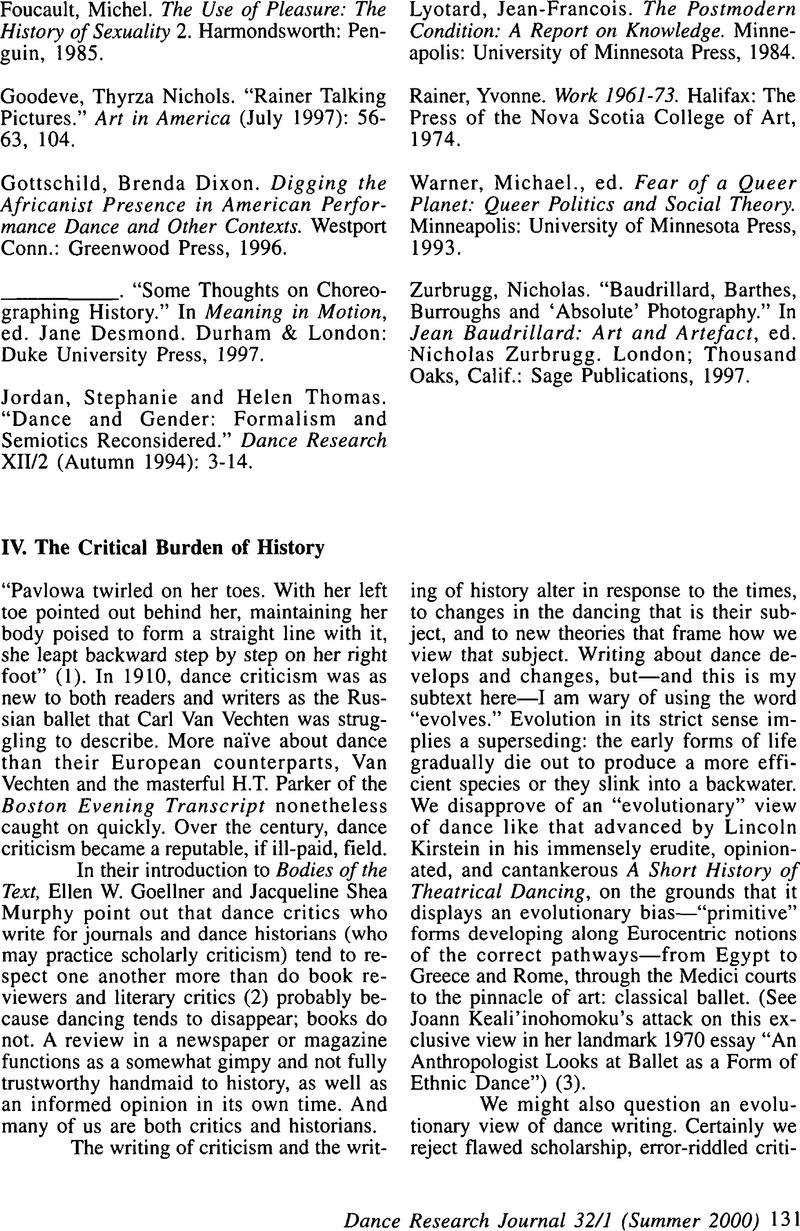Crossref Citations
This article has been cited by the following publications. This list is generated based on data provided by Crossref.
Brooks, Lynn Matluck
2002.
Dance History and Method: A Return to Meaning.
Dance Research,
Vol. 20,
Issue. 1,
p.
33.
MalborgKim
2009.
A Comparative Study on the Dance Writings of Edwin Denby and Deborah Jowitt - Focused on the Structure and the Critical Terms.
The Korean Journal of Dance Studies,
Vol. 26,
Issue. 26,
p.
1.
Walker, Ayo
2020.
Traditional White Spaces.
Journal of Dance Education,
Vol. 20,
Issue. 3,
p.
157.



